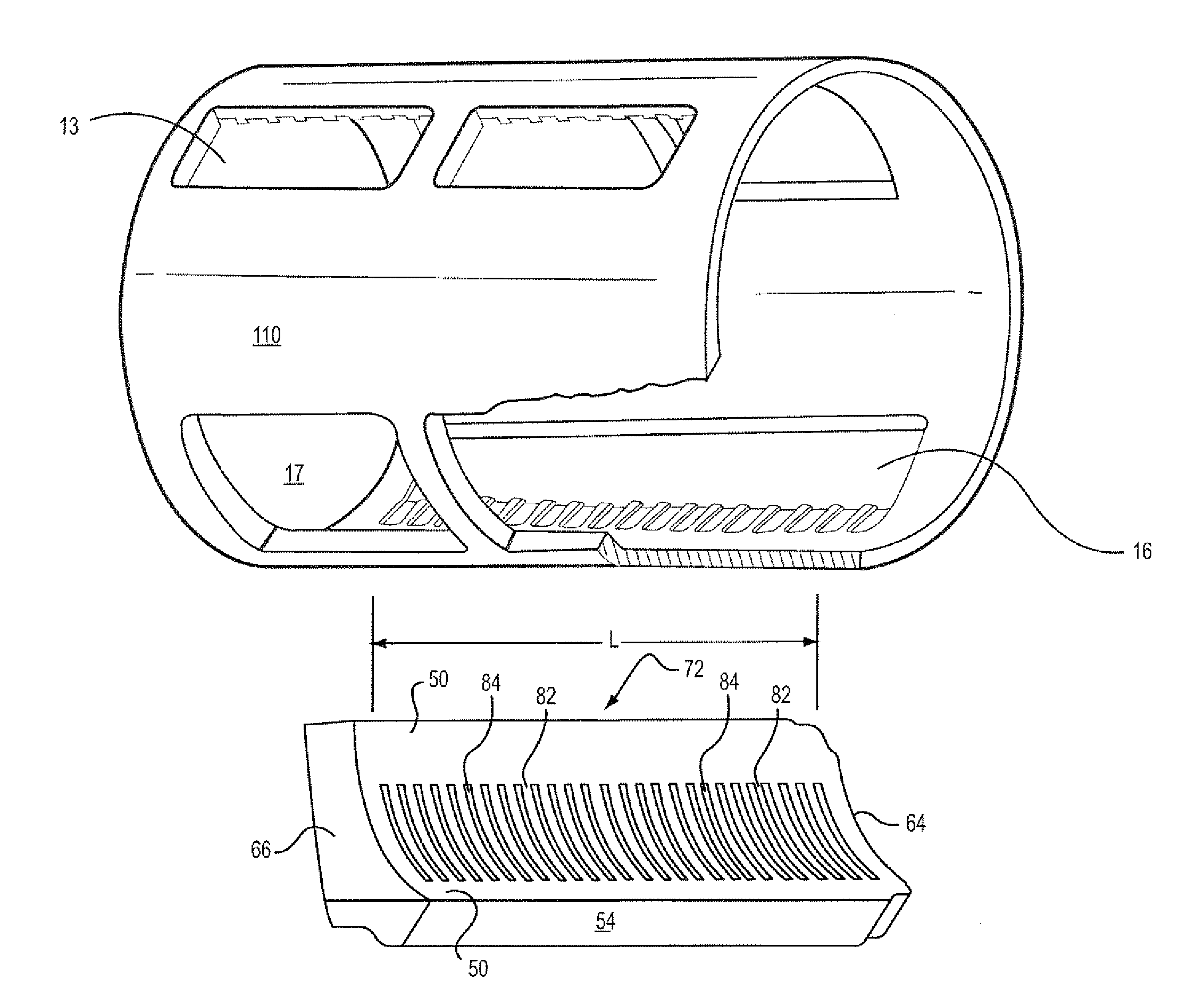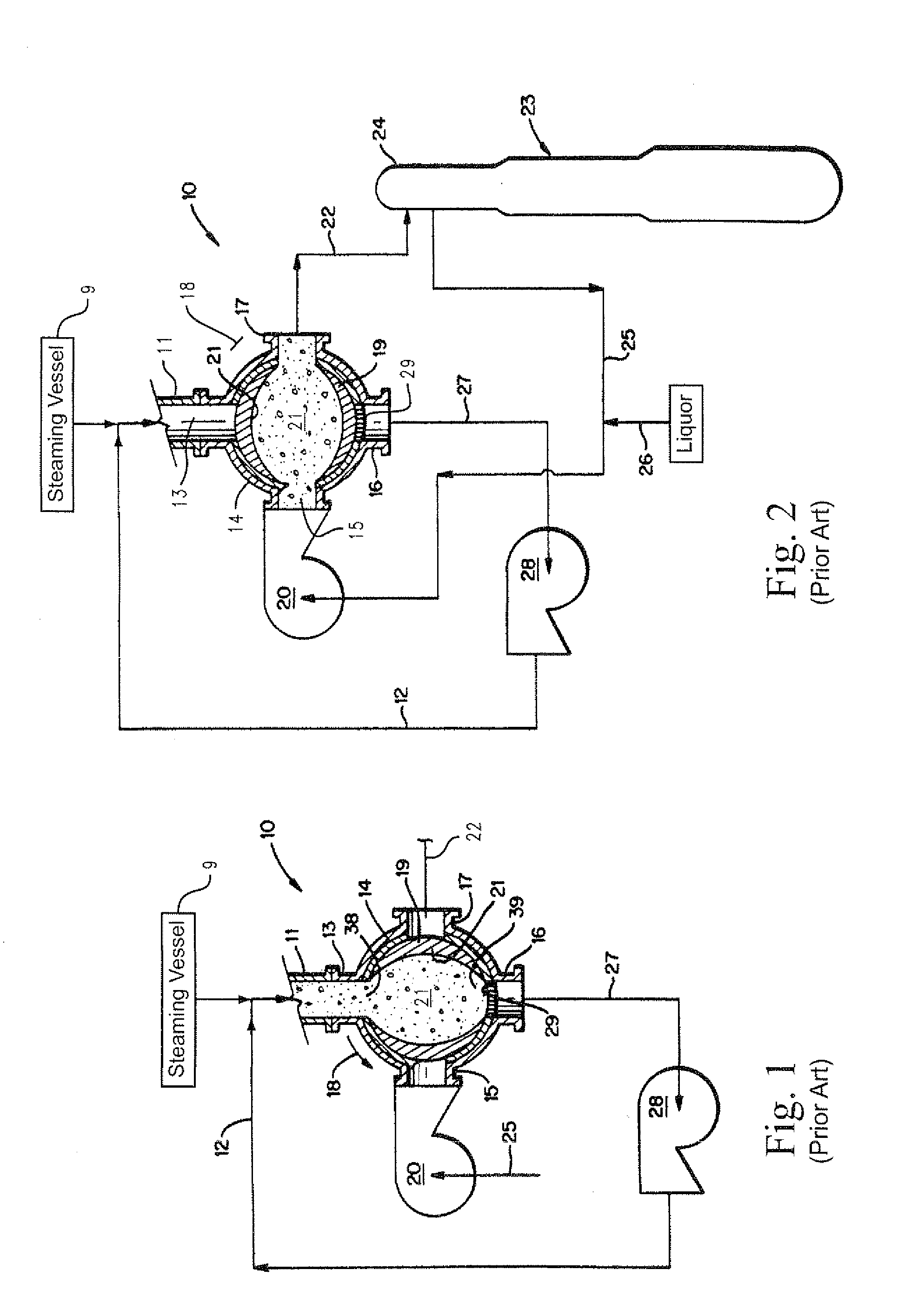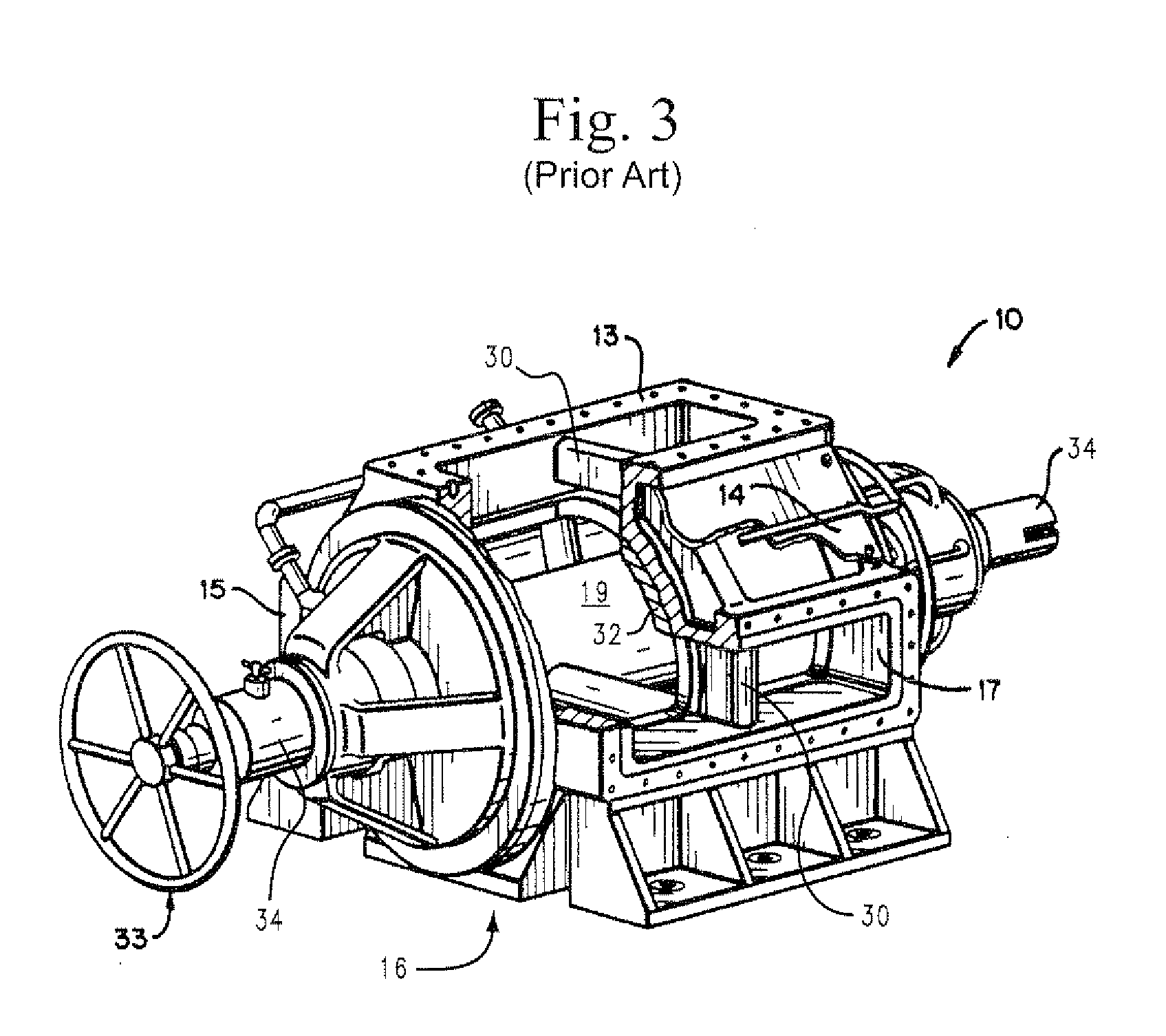Unobstructed low pressure outlet and screen grid for a high pressure feeder
a high-pressure feeder, unobstructed technology, applied in the field of high-pressure feeders, can solve the problems of reducing the capacity and efficiency of a hpf, and achieve the effects of enhancing the flow of wood chips, facilitating the flow through and out of the rotor, and reducing the pressure in the flow passing
- Summary
- Abstract
- Description
- Claims
- Application Information
AI Technical Summary
Benefits of technology
Problems solved by technology
Method used
Image
Examples
Embodiment Construction
[0023]FIGS. 1 and 2 schematically illustrate the operation of a high pressure transfer device, which is also referred to as a high pressure feeder (HPF) 10. As is conventional, the HPF 10 is connected to a chip chute 11, which is supplied with steamed wood chips (or other cellulosic material) from a conventional steaming vessel 9, the chips are slurried with liquid (liquor) from a liquid supply conduit 12. The chute 11 is connected to a first port (low pressure inlet) 13 of a housing (casing) of the HPF 10. The housing also has a second port (high pressure inlet) 15, a third port (low pressure outlet) 16, and a fourth port (high pressure outlet) 17. These ports 13, 15, 16 and 17 are disposed around the casing 14 at intervals of approximately 90 degrees. A pocketed rotor 19 rotates (see direction of rotation 18) within the housing 14.
[0024]The rotor 19 typically has four pockets 21 that each form a flow passage extending through the rotor in a direction perpendicular to the axis of r...
PUM
 Login to View More
Login to View More Abstract
Description
Claims
Application Information
 Login to View More
Login to View More - R&D
- Intellectual Property
- Life Sciences
- Materials
- Tech Scout
- Unparalleled Data Quality
- Higher Quality Content
- 60% Fewer Hallucinations
Browse by: Latest US Patents, China's latest patents, Technical Efficacy Thesaurus, Application Domain, Technology Topic, Popular Technical Reports.
© 2025 PatSnap. All rights reserved.Legal|Privacy policy|Modern Slavery Act Transparency Statement|Sitemap|About US| Contact US: help@patsnap.com



